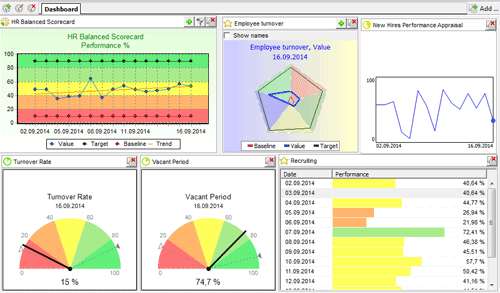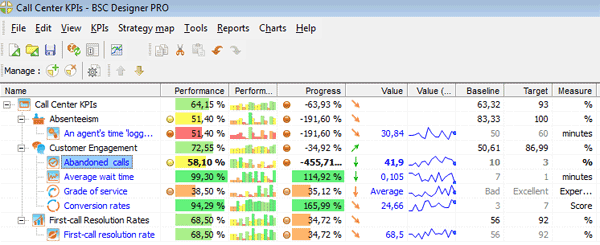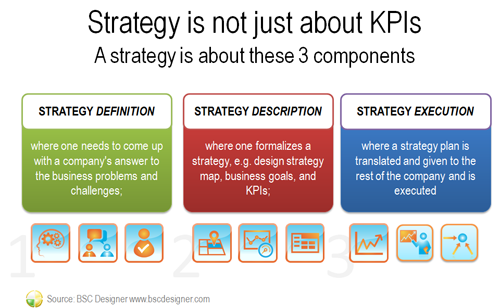The HR profession is being forced into some serious soul searching. It’s predicted that most low and many mid ranking HR roles are at risk of obseletion, due to software automation alternatives. As if this wasn’t enough to contend with, we also know that mid to higher ranking HR executives are still struggling to secure a seat at the executive table. The HR profession is being squeezed at both ends, and I believe it requires a sharp change in direction.

HR needs to move into the new world
If HR is to find new ground and a space in which to operate and be valued, it needs to extricate itself from the traditional HR world, where HR decisions are based on gut instinct and immerse itself in the new world of big data where decisions are based on hard data.
It may not be what the more touchy-feely HR profession is comfortable with, but hard-data-backed decisions, are what will gain HR credibility in the boardroom.
How do we know this? A KMPG white paper reported on HRZone.com reveals that 85% of C-Suite executives claim their HR teams, ‘fail to provide insightful analytics’. This creates a sense of uncertainty and distrust.
A Forbes article shows that HR teams who operate in a culture of data backed decision making are 4 times more likely to be respected by their business counterparts.
It’s clear that data backed insights and decision-making is the way forwards for HR professionals at all levels.
And if HR professionals don’t live and breathe data analytics it may be time to change profession, as this is what the industry is demanding from HR. But if you do want to engage with data analytics, and be an HR professional delivering data backed insights, where should you start?
From reactive to proactive reporting
According to Bersin, most HR professionals are at Level 1, which is reactive and ad-hoc HR Reporting. If this is where you are, you are behind the curve. You need to be getting to Level 2, which is proactive reporting, as a bare minimum, if you are to impress the CEO.
This involves operational reporting for benchmarking and decision-making and multi-dimensional analysis and dashboards.
At the very least, you should be deploying a set of HR KPIs that are attuned to your business, which feeds a digital dashboard that can sit at the heart of your decisions.
The starting place for HR data analystics
Where should you start? Implementing KPIs and digital dashboards has in the past been a laborious process, but like many other processes in HR, software has automated and simplified much of the digital dashboard generation process.
- BSC Designer is a tool that has been designed to make HR KPI deployment and digital dashboards generation relatively easy.
It really makes very little sense to try creating dashboards without software given the efficiencies it affords.
But, before you go into BSC Designer you’ll want to spend a bit of time background researching and developing a powerful and relevant set of KPIs upon which to guide your HR team and business.
10 Standard HR KPIs
Now, the exact KPIs that you use may vary according to the nature and size of your business, but these 10 standard HR KPIs represent a good starting point for any business until you can craft a set of your own customized KPIs:
- Performance of New Hire in 6 months
- Speed of Hire
- Quality of Hire
- Time To Productivity
- Percentage difference in productivity before and after training
- Percentage of employees that participate in career coaching
- Profit per employee
- Voluntary turnover
- Involuntary turnover
- Involuntary turnover high performers
KPIs backed insights are clearly more persuasive
Just one glance at these KPIs hints at the superior influencing power you will have at you disposal if you are implementing them. For example, what sounds more convincing to a CEO?
I need more training budget!
versus
There was an 8% increase in productivity after training and so can we roll it out to the other departments?
or,
We need to invest more in HR!
versus
Our profit per employee has increased 12% since we started doing appraisals 4 times a year, so can we roll this out across the board?
Data backed insights are clearly more persuasive!
Integrate KPIs into business scorecard
Having developed your KPIs it is time to start integrating them into a KPI management tool. This is where BSC Designer can help you. You can go into BSC Designer and quickly input your list of KPIs. The system comes with a core set of major business performance areas of: Financial Perspective, Customer Perspective, Internal Process Perspective and Learning & Growth. (These may vary within your own business and you can adjust as needed).
You can then easily go into this system and incorporate your HR KPIs under the appropriate business heading and this also helps to ensure that your indicators are aligned with business strategy.
If your KPIs are not able to align with core business performance areas you may need to ask yourself if these are the correct KPIs to be using.
While using a software tool like BSC Designer simplifies the KPI process, it doesn’t automate the whole thing for you. As a modern HR professional committed to data backed decision-making you’ll need to have good grasp of arithmetic and basic data principles like: percentages, weightings, actual value, baseline, min, max. But, don’t be to concerned as it’s all stuff you would have covered back in High School.
You’ll need to do a little bit of setup at the beginning when using a tool like BSC Designer which includes entering each KPI, including benchmarks such as, £1,000 profit per employee. Don’t worry, there are easy to follow video tutorials to help you set it up and understand the BSC Designer system. Once set-up you can then update the system with the actual HR performance figures such as actual profit, actual turnover etc…
Digital dashboard for HR
This is where using a system like BSC Designer really shows it worth. You can now see the fruits of your gentle labour to set it up correctly, as BSC Designer will automatically create a digital dashboard for you in seconds.

This would take hours to complete and maintain in Excel. These dashboards can of course be used to enable you to track and monitor the performance of your HR organization against key benchmarks, giving you the capacity to make data backed insights and decisions which will be the first step to HR claiming it’s rightful seat in the boardroom as a valued business partner.
Reference
- The Future Of Employment: How Susceptible Are Jobs To Computerisation? Carl Benedikt Frey, Michael A. Osborne, September 17, 2013, http://www.futuretech.ox.ac.uk/sites/futuretech.ox.ac.uk/files/The_Future_of_Employment_OMS_Working_Paper_1.pdf
- Poor data hampers HR’s boardroom reputation, Janine Milne, 26th February 2013, http://www.hrzone.com/topic/technology/poor-data-hampers-hrs-boardroom-reputation/129480
- Big Data in Human Resources: A World of Haves And Have-Nots, 2013, Josh Bersin, http://www.forbes.com/sites/joshbersin/2013/10/07/big-data-in-human-resources-a-world-of-haves-and-have-nots/

























 Juan Carlos Aranibar
Juan Carlos Aranibar




















 Miro Knižka je reprezentantom našich produktov v regióne Slovenská republika, Česká republika a okolie. Je držiteľom certifikátu BSC DESIGNER SPECIALIST a môže Vám pomôcť s technickou aj obsahovou stránkou Vašej Balanced Scorecard, jej prepojením a aktívnym využívaním.
Miro Knižka je reprezentantom našich produktov v regióne Slovenská republika, Česká republika a okolie. Je držiteľom certifikátu BSC DESIGNER SPECIALIST a môže Vám pomôcť s technickou aj obsahovou stránkou Vašej Balanced Scorecard, jej prepojením a aktívnym využívaním.